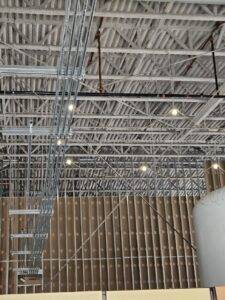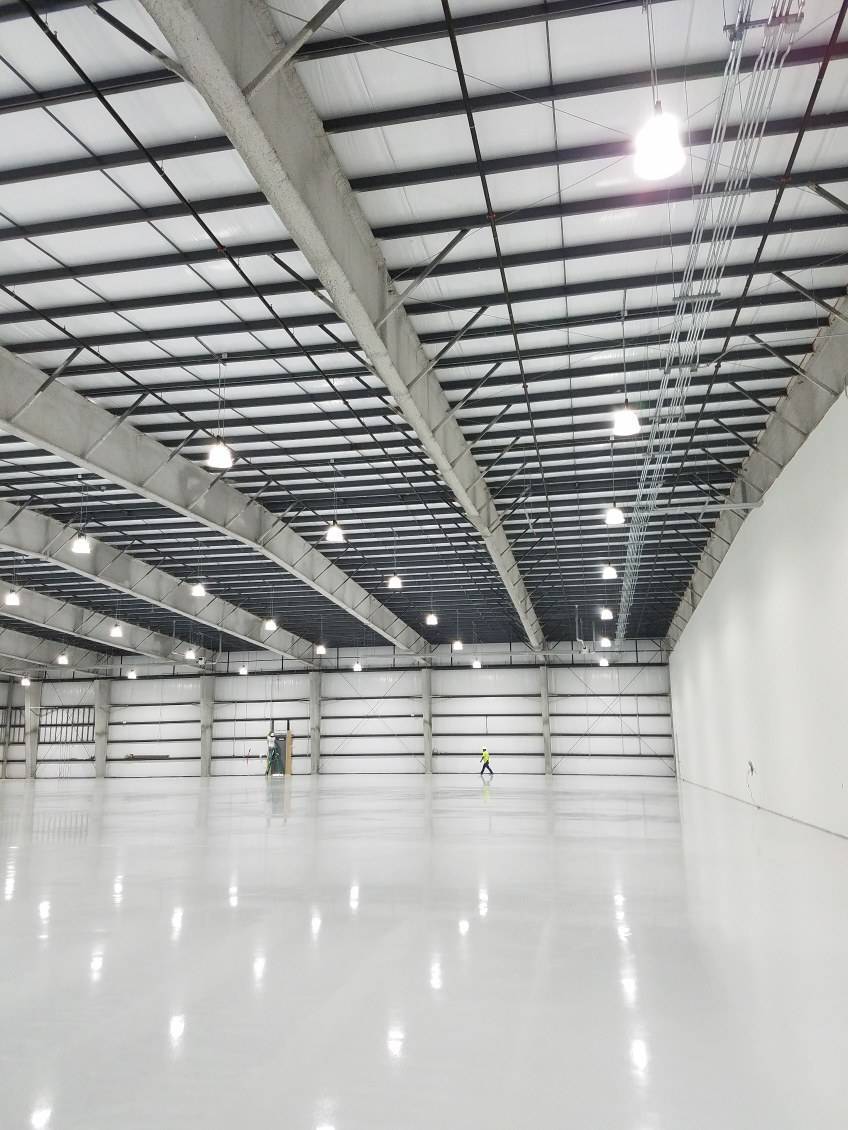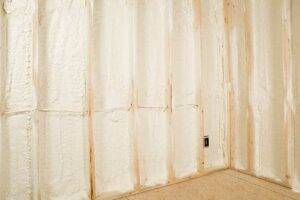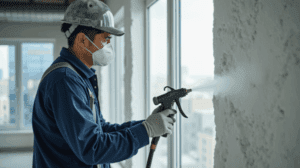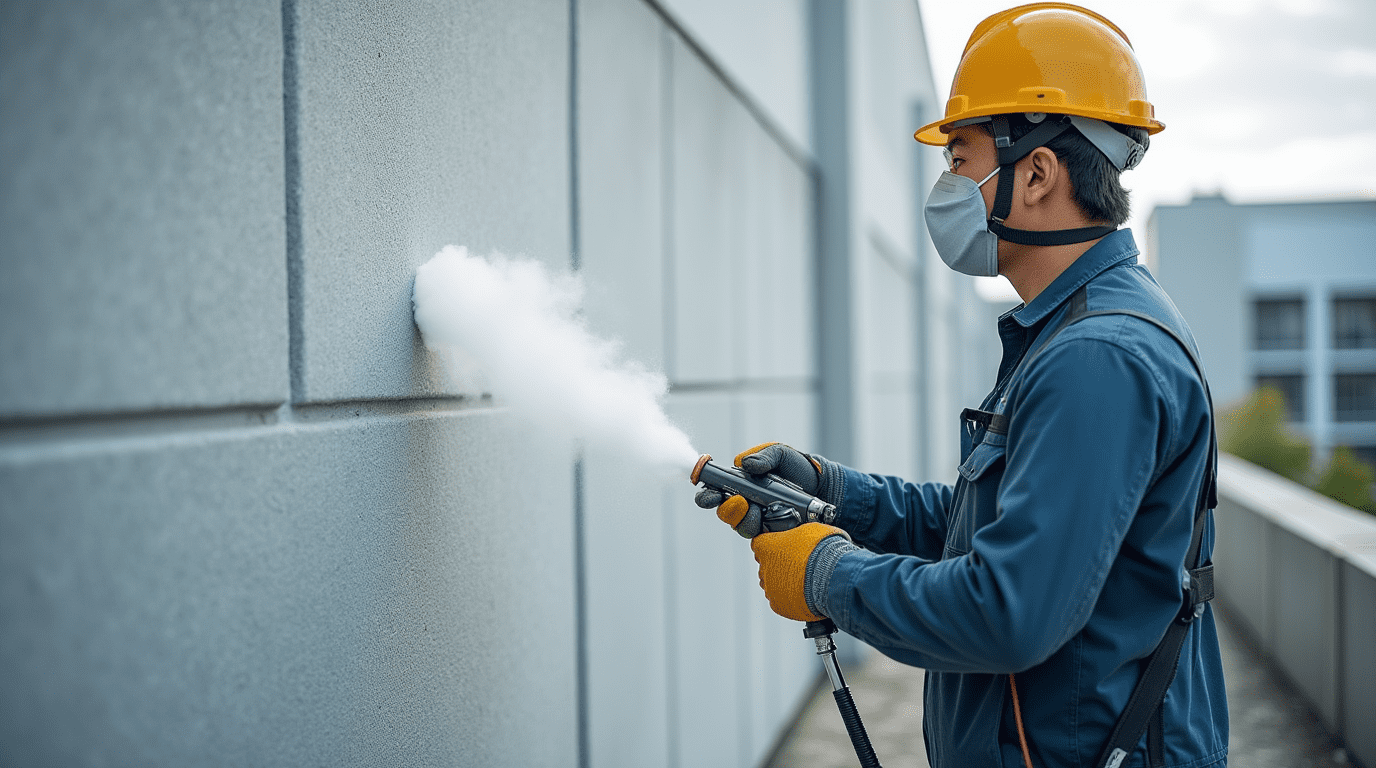K13 Installation Cost: Complete Budget Guide
Bahl Fireproofing
K13 sprayed fiber insulation costs between $1.50 and $3.00 per square foot for professional installation, but thickness requirements, substrate condition, project size, and business disruption all affect your final budget. This guide breaks down every cost factor so facility managers and contractors can budget accurately.
TLDR: K13 installation runs $1.50 to $3.00 per square foot including ICC-licensed labor and material, with thickness being the primary cost driver. Substrate preparation adds 15 to 20 percent when contamination exists. The 24 to 48 hour occupant evacuation creates indirect business costs that can exceed installation expenses for some facilities. Section 179D tax deductions offset costs significantly.
Opening
I’ve bid hundreds of K13 projects throughout Texas, Kansas, and Oklahoma, and facility managers always ask the same question: what’s this going to cost? The answer depends on variables they haven’t considered yet.
A 5,000 square foot warehouse with clean metal decking costs half what it does when substrate prep is required. Schedule during peak hours and lost revenue dwarfs contractor charges. Factor in Section 179D tax deductions and net cost drops thirty percent or more.
After two decades installing spray-applied insulation, I’ve learned that accurate budgeting requires understanding all cost drivers. Here’s what you need to know before requesting bids.
K13 Installation Cost: $1.50-$3.00 Per Square Foot Breakdown
K13 installation typically costs $1.50 to $3.00 per square foot when performed by ICC-licensed contractors. That includes professional labor, material, equipment mobilization, and standard cleanup. It excludes substrate preparation beyond basic cleaning, business disruption costs, and engineering fees for energy code compliance.
The wide range exists because thickness drives material volume and labor hours. One inch providing R-3.7 costs substantially less than three inches providing R-11.1 plus maximum acoustic performance. Regional pricing adds another layer, with urban areas running 20 to 30 percent above rural markets.
Material costs remain stable because K13 uses recycled cellulose fiber rather than petroleum-based products. Labor represents 35 to 50 percent of total cost and varies based on local wage rates and project complexity.
K13 Cost by Thickness: 1-Inch ($1.50) vs 2-Inch ($2.25) vs 3-Inch ($2.75)
Thickness selection directly impacts both performance and budget. One inch provides R-3.7 thermal resistance with minimal acoustic benefit at $1.50 to $2.00 per square foot. This works where code requires modest insulation but sound control doesn’t matter.
Two inches delivers R-7.4 and NRC ratings between 0.90 and 1.05, typically costing $2.00 to $2.50 per square foot. This represents the sweet spot for most commercial applications balancing energy efficiency with acoustic control.
Three inches provides R-11.1 and maximum acoustic performance with NRC up to 1.05 at $2.50 to $3.00 per square foot. Gymnasiums, call centers, and manufacturing facilities with noise concerns justify this thickness.
Applications exceeding three inches target specific energy code requirements in cold climates, providing R-14.8 to R-18.5 at $3.00 to $4.50 per square foot.
K13 Installation Cost Comparison: Small vs Medium vs Large Projects
Small projects pay disproportionately for mobilization overhead. Equipment mobilization runs $500 to $2,000, which adds substantially to per-square-foot costs on small jobs. A 750 square foot project might cost $2.80 per square foot while 7,500 square feet costs $2.10 per square foot because fixed costs spread across more area.
Medium projects between 2,500 and 5,000 square feet achieve the best efficiency-to-cost ratio. Large projects exceeding 10,000 square feet benefit from economies of scale but extend building evacuation periods that multiply business disruption costs.
Combining multiple smaller projects into a single contract often captures economies of scale. If your facility needs insulation in several areas, coordinate work to maximize crew efficiency.
K13 Substrate Prep Cost: Why Rust and Contamination Add $0.50-$2.00/Sq Ft
Substrate condition affects project costs more than most facility managers expect. K13 bonds to clean, dry surfaces including metal, concrete, wood, and gypsum. Contamination requires remediation before application.
Clean substrates require only standard surface cleaning included in base pricing. Contaminated substrates requiring extensive prep add $0.50 to $2.00 per square foot depending on severity. Rust removal, degreasing, and paint stripping all require additional labor before K13 application begins.
Complex geometry requiring masking around HVAC, electrical, and sprinklers adds $0.25 to $0.75 per square foot. Substrate preparation typically represents 15 to 20 percent of total project cost when significant remediation is required.
Get detailed substrate assessment before requesting bids. Photographs and facility history help contractors provide accurate estimates rather than contingency pricing. Surprises during installation lead to change orders.
K13 Installation Business Cost: Retail Loses $2,500-$8,000 Daily During Shutdown
Building occupants must evacuate for 24 to 48 hours during K13 application and curing. This creates indirect costs that facility managers must budget separately from contractor charges. For some businesses, lost revenue during evacuation exceeds installation cost.
Retail facilities lose $2,500 to $8,000 daily. Restaurants face $3,000 to $12,000 in lost revenue plus food waste. Medical offices lose $5,000 to $15,000 daily when appointments cancel. Warehouses face inventory relocation and disrupted shipping schedules. Office environments lose productivity rather than direct revenue.
These indirect costs don’t appear in contractor bids but require budgeting consideration. Smart facility managers coordinate K13 installation during planned downtime, between shifts, or during seasonal slow periods to minimize business impact.
Section 179D Tax Deduction for K13: Up to $5.00 Per Square Foot
K13 qualifies for federal tax incentives under Section 179D when projects achieve specific energy cost reductions. Deductions range from fifty cents to five dollars per square foot depending on energy savings percentage.
Qualifying requires third-party energy modeling costing $1,500 to $5,000, but tax benefits often exceed this expense many times over. A 20,000 square foot installation earning $2.50 per square foot generates $50,000 in tax benefits.
The International Energy Conservation Code establishes minimum R-value requirements that vary by climate zone. K13 helps facilities comply when applied at appropriate thickness.
Industry data suggests heating and cooling cost reductions of 20 to 30 percent are typical when insulation is part of comprehensive building upgrades. Payback periods typically range from two to five years when combining direct savings with tax incentives.
K13 Installation Cost Examples: 2,000-20,000 Square Foot Projects
A 2,000 square foot warehouse with clean metal decking at two-inch thickness costs $4,000 to $5,000, roughly $2.00 to $2.50 per square foot. Installation completes in one day, occupants return after 48-hour curing.
A 20,000 square foot warehouse at two inches benefits from economies of scale at $32,000 to $50,000, approximately $1.60 to $2.50 per square foot. Lower pricing reflects competitive bidding on large projects with ideal conditions.
A 5,000 square foot office requiring 2.5-inch thickness for acoustic control costs $10,000 to $15,000, or $2.00 to $3.00 per square foot.
A 3,000 square foot contaminated roof deck drives costs to $8,000 to $12,000, or $2.67 to $4.00 per square foot due to substrate preparation.
How to Reduce K13 Installation Cost 20%: 5 Budget-Saving Strategies
Select thickness based on actual performance requirements rather than defaulting to maximum. If code requires R-7 and you don’t need acoustic control, specify two inches instead of three and save twenty percent.
Schedule during off-peak periods when contractor availability improves. Winter months see less insulation work in many markets. Coordinate with planned downtime to minimize revenue loss during evacuation.
Combine multiple projects to capture economies of scale. Get detailed substrate assessment before requesting bids to allow accurate pricing rather than contingency estimates.
Coordinate with other trades to reduce overall disruption. If the facility needs roofing, HVAC upgrades, or electrical improvements requiring evacuation, schedule K13 during the same shutdown period.
Work with contractors who understand energy code compliance and Section 179D requirements. We provide K13 installation services that include energy compliance support.
Frequently Asked Questions
What’s included in the per-square-foot cost?
The $1.50 to $3.00 range includes ICC-licensed labor, K13 material, equipment mobilization, standard substrate cleaning, application, and HEPA cleanup. It excludes extensive substrate prep, engineering fees, and occupant relocation costs.
How does project timing affect cost?
Off-peak scheduling when contractor availability improves can reduce costs through competitive bidding. The bigger factor is minimizing business disruption by installing during planned downtime, weekends, or seasonal slow periods.
Can I reduce costs by doing prep work myself?
Facility staff can handle preliminary cleaning like removing loose debris. However, specialized prep including rust removal and degreasing requires professional equipment. Attempting difficult prep without training often creates problems costing more to fix.
Do I need to remove everything from the space?
Building evacuation for 24 to 48 hours means removing people, not furniture. However, sensitive items should be protected because overspray settles on exposed surfaces. Contractors provide standard masking for fixed equipment.
How do energy incentives affect net cost?
Section 179D deductions ranging from fifty cents to five dollars per square foot can offset 15 to 50 percent of installation costs when projects meet energy savings requirements. Third-party modeling costs $1,500 to $5,000 but benefits typically exceed this expense.
What happens if substrate is worse than expected?
Contractors include change order provisions for unexpected conditions. Get detailed pre-bid assessment including test patches in questionable areas to minimize surprises. Reputable contractors communicate concerns immediately rather than proceeding with inadequate preparation.
How long does installation take?
Application time depends on project size and complexity. A 2,000 square foot warehouse might complete in one day, while 20,000 square feet requires three to five days. Add 24 to 48 hours for curing before occupant return.
Does K13 cost less than other insulation?
K13 typically costs more per square foot than batt insulation but installs where batts aren’t practical. Compared to closed-cell spray foam at $3.00 to $7.00 per square foot, K13 costs less and provides superior acoustic performance while delivering comparable thermal resistance.
Key Takeaways
- K13 installation costs $1.50 to $3.00 per square foot with thickness as primary cost driver from R-3.7 at one inch to R-11.1 at three inches
- Substrate preparation adds 15 to 20 percent to total cost when contamination exists, potentially $5,000 to $15,000 on larger installations
- Occupant relocation creates indirect business costs from $2,500 to $15,000 daily depending on facility type
- Section 179D tax deductions of fifty cents to five dollars per square foot offset costs when projects achieve documented energy savings
- Project size dramatically affects per-square-foot pricing with economies of scale on installations exceeding 10,000 square feet
- Cost optimization through thickness selection, off-peak scheduling, and substrate assessment reduces expenses without compromising quality
Contact Us
If your facility needs K13 insulation and you want accurate cost estimates based on specific conditions, let’s walk the space and develop realistic budgets. Contact Bahl Fireproofing today to schedule a site assessment and project consultation.
Disclaimer: This article provides general educational information about fireproofing and insulation systems and does not constitute professional engineering advice or product specification. System selection must be based on project-specific fire ratings, thermal requirements, acoustic performance needs, environmental conditions, substrate requirements, and budget constraints. Code requirements vary by jurisdiction and project type. Always consult with a licensed professional and verify UL or FM assembly listings before finalizing specifications.

